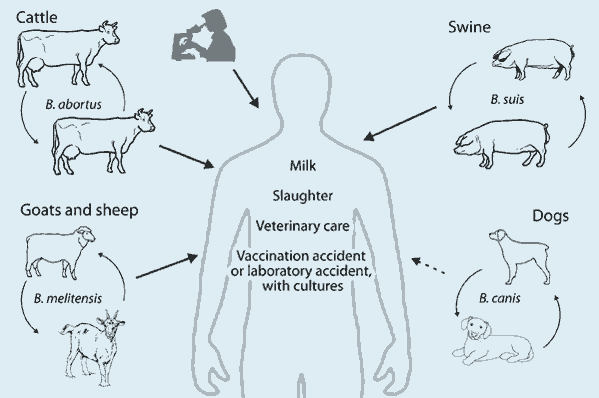It takes anything from five days to three moths (usually its two weeks) from infection to the first symptoms of the disease. Brucellosis strikes suddenly and is accompanied by symptoms that resemble to common cold such as fever, headache, joint pain, muscle pain, fatigue, etc. Profuse sweating typically occurs in the night, as does chough and sometimes even chest pain. Reported gastric problems include loss of appetite, nausea, vomiting, alternating diarrhea and constipation, especially in adults. In many patents, symptoms last from 2 to 4 weeks followed by spontaneous recovery.

Other patients develop intermitting fever and other symptoms which fade and intensify in intervals ranging from 2 to 14 days. In patients whit such ‘undulent’ fever, recovery lasts between 3 to 12 months. Clinical sighs can reoccur (relapse) months after the initial stage of infection, even after a successful treatment. Most common complications of brucellosis include joint inflammation and spine, testis, liver, and skin conditions, as well as long-lasting fatigue. Cases of nervous system being affected by brucellosis are characterized, inter alia, by brain envelope inflammation and meningitis and are reported in 5% of the patients. However, most severe complication of brucellosis is endocarditis (heart valves inflammation) with possible fatal outcome. Symptoms of brucellosis in pregnant women can include premature birth or birth of underweight infants with respiratory problems and jaundice. Human brucellosis can be prevented by control of infection in animals.
Heat processing (cooking) of food products of animal origin, good hygiene and use of protective clothes and equipment are essential in prevention of brucellosis, in particular in high-risk professions (farmers, veterinaries, butchers, laboratory staff). Long-term antibiotics therapy reports good results. However, patients suffering from endocarditis must undergo surgery.